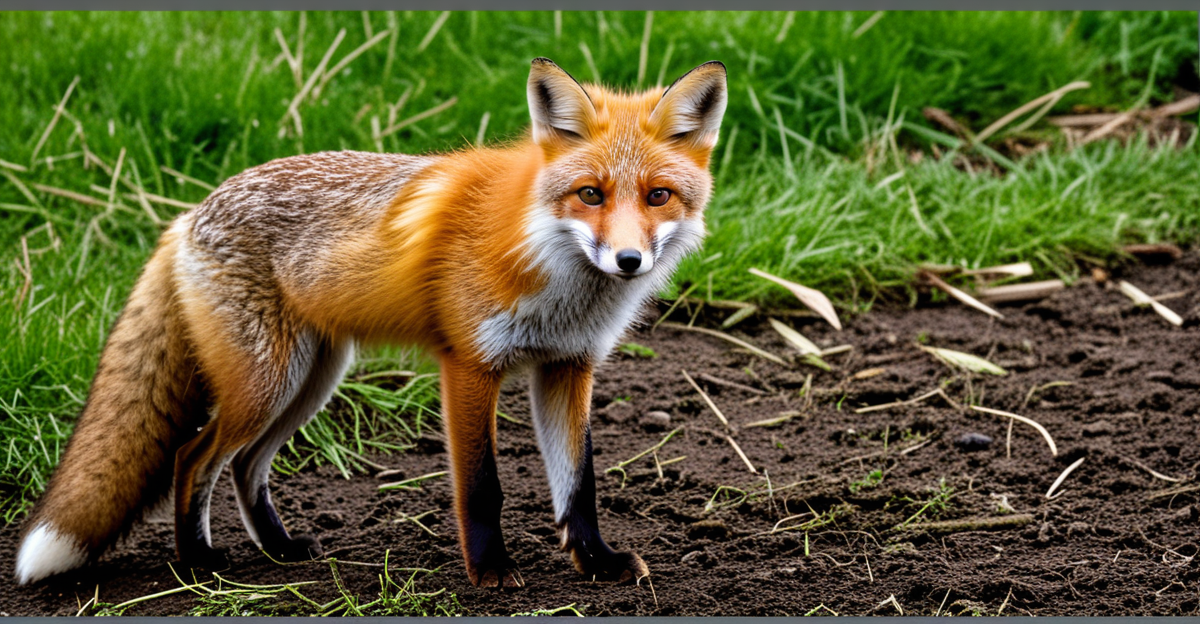Importance of Monitoring Urban Fox Health in the UK
Monitoring urban fox health is essential in the UK, particularly given the close proximity of fox populations to dense human habitats. Surveillance in these areas helps detect changes in disease patterns that could impact both UK wildlife health and public safety. Urban foxes are not just inhabitants of city environments; they play a pivotal role in ecosystem stability by controlling rodent populations and influencing biodiversity.
The importance of surveillance extends beyond animal well-being; it also safeguards public health by identifying potential zoonotic diseases early. It is critical to understand how infections or parasites present in foxes might transfer to humans or pets. By conducting systematic and ongoing urban fox health monitoring, authorities can preempt health crises and implement informed interventions.
Sujet a lire : Tracking city hedgehogs: novel uk research methods to observe hedgehog populations
The responsibility for this surveillance falls on multiple stakeholders. Local authorities undertake regulatory oversight and provide resources, scientists contribute research expertise and analyse data, while the community aids through observations and reporting sightings or unusual fox behaviour. This collaborative framework ensures a comprehensive approach to maintaining both fox health and urban ecosystem resilience in the UK.
Importance of Monitoring Urban Fox Health in the UK
Monitoring urban fox health in the UK is crucial due to the close proximity of these animals to human populations. Urban fox health monitoring allows local authorities and scientists to track disease outbreaks that could affect both foxes and people, thus supporting public health and ecosystem stability. Foxes in cities often act as sentinels, indicating environmental health and potential zoonotic threats.
Cela peut vous intéresser : Uk hikers’ guide: safely helping distressed wildlife in the wild – key steps
The importance of surveillance extends beyond disease control. Healthy fox populations contribute to balanced urban ecosystems by controlling rodent numbers and participating in food webs. Without regular monitoring, disease prevalence could escalate unnoticed, risking both wildlife and human communities.
Stakeholders play varied but interconnected roles. Local authorities implement management strategies informed by surveillance data. Scientists conduct research to identify health trends and emerging pathogens. Additionally, community involvement enriches monitoring through public reporting and citizen science projects, enhancing data collection across urban settings.
In summary, urban fox health monitoring in the UK is vital for safeguarding wildlife welfare, protecting public health, and maintaining ecological balance in increasingly populated areas. The integration of efforts from authorities, researchers, and communities ensures timely detection and response to health threats within urban fox populations.
Key Health Indicators for Urban Foxes
Monitoring urban fox health indicators provides critical insights into the overall well-being of fox populations and their role in the urban ecosystem. Common diseases detected through urban fox health monitoring include sarcoptic mange, canine distemper, and various parasitic infections, all of which have significant implications for UK wildlife diseases management.
Assessment involves both physical and behavioural health markers. Physical signs such as coat condition, wounds, or lethargy frequently indicate underlying disease prevalence in foxes. Behavioural changes—for example, increased daytime activity or reduced fear of humans—can signal neurological impacts from infection. These indicators enable early detection, facilitating prompt responses to emerging health threats.
Understanding disease prevalence in foxes aids in preventing wider spread among urban wildlife and potential spillover to humans or pets. Regular surveillance of these health markers forms the backbone of effective urban fox health monitoring, ensuring timely, evidence-based decisions. Scientists use detailed observations combined with diagnostic tests to validate findings, connecting field signs to specific pathogens.
In summary, careful tracking of both visible symptoms and behavioural patterns creates a comprehensive picture of fox health, supporting ecosystem stability and safeguarding public health through informed control measures.
Importance of Monitoring Urban Fox Health in the UK
The importance of surveillance in densely populated urban areas lies in its ability to identify changes in disease dynamics that could negatively affect both urban fox health monitoring and UK wildlife health. Close interactions between foxes, humans, and pets create pathways for zoonotic diseases to emerge, requiring vigilant observation. Monitoring supports early detection of infectious diseases, parasites, or environmental stressors impacting fox populations.
A comprehensive approach involves multiple stakeholders. Local authorities coordinate management actions, enforce regulations, and allocate resources based on surveillance data. Scientists perform field studies and laboratory analyses, providing critical insights into disease prevalence and ecological impacts. Meanwhile, community participation through reporting sightings and unusual fox behaviours enhances datasets, enabling timely responses.
Moreover, healthy fox populations contribute to maintaining ecosystem balance by controlling prey species, influencing biodiversity, and reducing pest outbreaks. Failing to monitor these urban foxes risks unchecked disease spread that can impair this balance and jeopardize public health. Intentional, systematic urban fox health monitoring therefore creates a feedback loop informing conservation strategies and safeguarding urban environments across the UK.
Importance of Monitoring Urban Fox Health in the UK
The importance of surveillance in monitoring urban fox health stems largely from densely populated environments where foxes, humans, and pets interact frequently. These interactions create pathways for the spread of infectious agents, making urban fox health monitoring critical for early detection of diseases that could affect both fox populations and public health. For example, tracking outbreaks of UK wildlife health concerns such as sarcoptic mange or distemper requires consistent, systematic observation.
Monitoring aids ecosystem stability by ensuring fox populations remain healthy, thus maintaining their role in controlling rodent populations and contributing to biodiversity. When surveillance detects rising disease prevalence, local authorities can implement targeted control measures, safeguarding urban ecosystems and reducing zoonotic risks.
Stakeholders share responsibilities: local authorities allocate resources and enforce strategies; scientists conduct research and analyse data on urban fox health; and community members contribute valuable reports of sightings and unusual behaviour. This collaborative framework maximises data quality and helps adapt management approaches. The collective focus on urban fox health through rigorous surveillance ensures both wildlife welfare and public safety are proactively addressed in the UK’s urban settings.
Importance of Monitoring Urban Fox Health in the UK
The importance of surveillance in urban areas stems from the close interactions between foxes, humans, and pets, which increase the risk of transmitting diseases. Urban fox health monitoring provides critical data to detect disease outbreaks early, enabling timely intervention to protect both UK wildlife health and public health. Monitoring facilitates understanding of how fox health affects ecosystem stability, as foxes regulate prey populations and contribute to biodiversity in city environments.
Local authorities rely on surveillance findings to develop management strategies, enforce regulations, and allocate resources effectively. Scientists play an integral role by analyzing collected data and identifying emerging health threats that could influence broader UK wildlife health. Meanwhile, community involvement through reporting unusual fox behaviour or sightings enriches surveillance efforts, enhancing data accuracy and geographic coverage.
This collaborative approach ensures that changes in fox health are quickly identified, reducing the risk of disease spillover to humans and domestic animals. By prioritizing urban fox health monitoring, stakeholders maintain urban ecosystem balance and uphold public safety in the UK’s growing cityscapes.
Importance of Monitoring Urban Fox Health in the UK
The importance of surveillance in urban areas is paramount due to the dense interactions between foxes, humans, and pets, which increase disease transmission risks. Urban fox health monitoring identifies emerging infections and parasites quickly, allowing interventions before outbreaks escalate. This surveillance supports both UK wildlife health and public safety by preventing zoonotic spillovers.
Fox health directly influences ecosystem stability. Healthy fox populations regulate rodent numbers, reducing pest-related damage, and maintain biodiversity. When diseases spread unchecked among foxes, this balance is disrupted, potentially causing cascading ecological effects. Therefore, continuous urban fox health monitoring is critical to preserving functional urban ecosystems.
Effective surveillance relies on a coordinated approach among stakeholders. Local authorities manage resources and implement control policies based on monitoring data. Scientists conduct field studies, laboratory analyses, and interpret trends in fox health. Meanwhile, communities contribute by reporting sightings and unusual behaviour, extending observational coverage across urban landscapes. This collaboration strengthens data quality and responsiveness, enhancing disease detection and management.
In essence, monitoring urban foxes acts as an early warning system for both UK wildlife health threats and public health concerns. It enables proactive measures, ensuring healthy fox populations coexist safely alongside urban residents.










